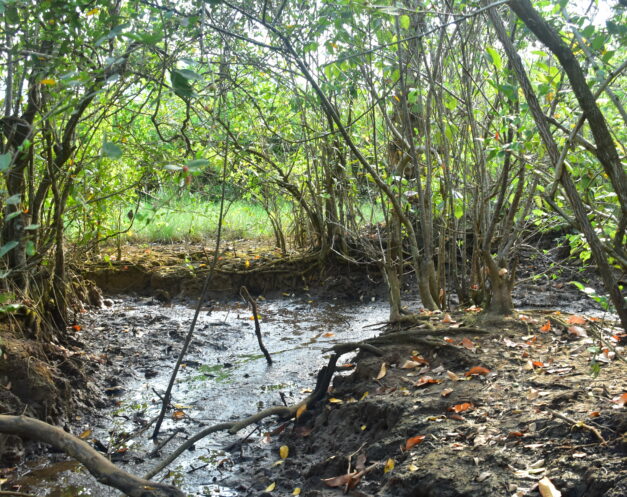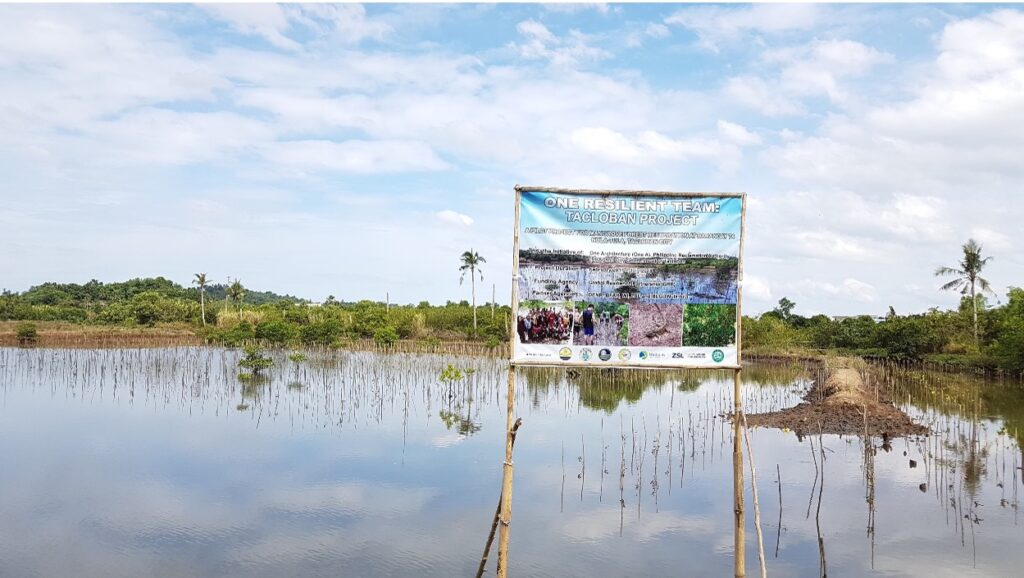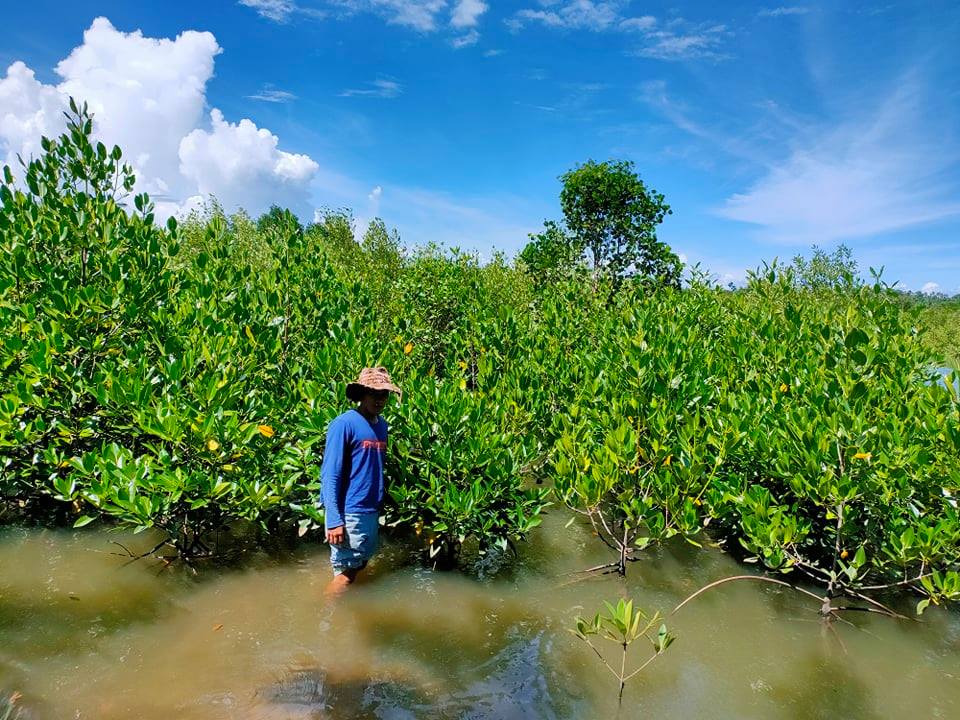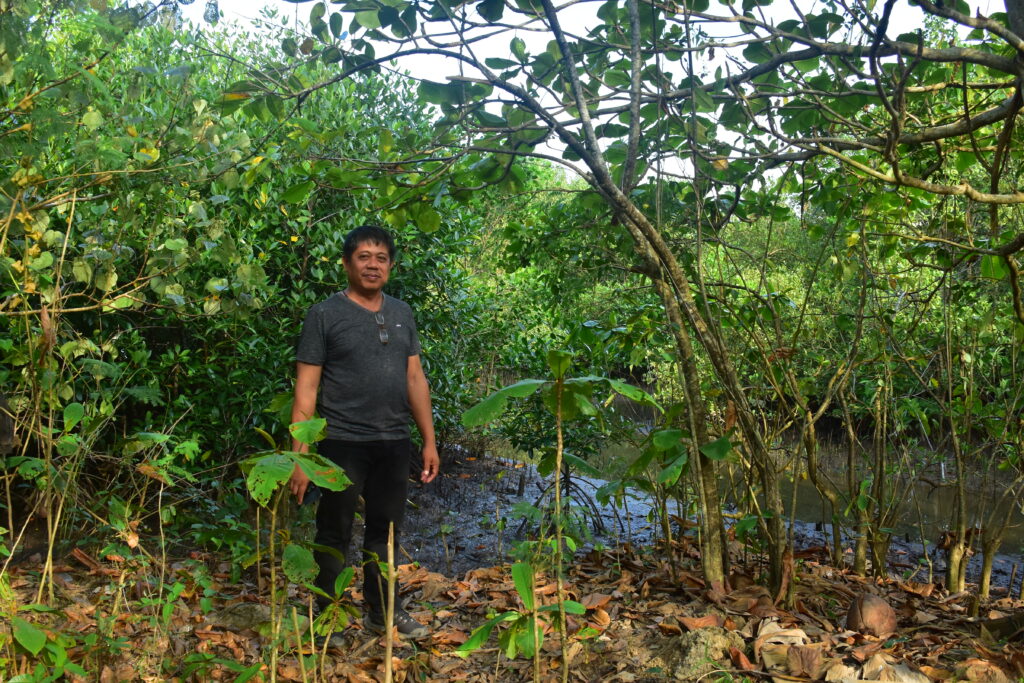Restoring the mangroves of Nula-tula, Tacloban:

A story of perseverance, collaboration, and resilience
The village of Nula-tula in Tacloban City, Philippines, si a living testament of a successful mangrove restoration initiative by One Architecture Project, Philippine Reclamation Authority, and the City Government of Tacloban.
Using the Ecological Mangrove Restoration approach, what had once been an abandoned fishpond was reverted to a greenbelt of mangroves and beach forest under the One Resilient Team – Tacloban Project.

The project is a nature-based solution aimed at protecting the coast of Nula-tula against the impact of storms like Super Typhoon Yolanda (international name Haiyan) in 2013.
A long and winding journey to mangrove restoration
In the Philippines, settling Fishpond Lease Agreements (FLAs) takes an arduous process. Politics, overlapping mandates, and tenurial issues surround FLAs. The pond in Barangay 74 Nula-tula had such an FLA prior to the onslaught of Super Typhoon Yolanda. When it was declared part of the hazard zone after the 2013 super storm, the City Environment and Natural Resources Office (CENRO) of Tacloban identified the pond as a potential site for mangrove restoration.
Beginning 2016, it took around a year for the CENRO of Tacloban to convince the BFAR, National Housing Authority (NHA), Philippine Reclamation Authority (PRA), the city government of Tacloban, and the village chief of Barangay Nula-tula to use the pond for mangrove restoration. Simultaneously, the CENRO of Tacloban likewise launched a public awareness campaign on the benefits of mangroves.
Once the tenurial right of the fishpond was settled, the actual reversion of the pond began in 2018 using the principles of Ecological Mangrove Restoration (EMR). A two-week training program for the village officials and community members of Barangay Nula-tula was conducted with the technical guidance of the Zoological Society of London in the Philippines and partial funding of Wetlands International Philippines.
In reverting the fishpond, community members participated in the breaking down of a dike to restore tidal flow, land development, and the collection of wildlings of mangrove species from a nearby natural mangrove forest to restore diversity of flora. The wildlings were supplemented with saplings of Rhizophora spp. from adjacent nursery sites and were planted one (1) meter apart in a zig-zag pattern, providing sufficient space for tidal water flow and exchange between coast and fishpond. By the end of 2018, eleven thousand (11,000) saplings were voluntarily planted by the community of Nula-tula and Tacloban City locals.

Reaping the benefits of what was sown
The Project and planting may have completed in 2018, but the CENRO of Tacloban, Barangay 74 Nula-tula, and community members continue to monitor and guard the site from illegal mangrove cutting. The mangroves had an astounding 96.5% survival rate! After two years, the saplings grew to around 2-3 meters, some species matured, and the canopy closed in 2020. Then in 2023, the trees grew to about 6-8 meters in height.
The mangrove patch started providing ecosystem services after two years (since 2020). The matured trees began to produce seeds and propagules which were dispersed by the tides to the adjacent damaged mangrove areas. Villagers from Nula-tula and nearby villages have started harvesting mollusks for food and livelihood. Recruitment of fishes (mudskippers and others) and more invertebrates (e.g., shells, shrimps, mud-crabs) have also been reported by the locals. Meanwhile, in the channel built for tidal water to flow from the sea to the fishpond, mud has been deposited to provide a feeding ground for shorebirds.
The villagers of Nula-tula and the Tacloban City ENRO take pride in the mangrove restoration project, benefitting from the ecosystem services the mangrove forest provides and becoming the social fence needed to conserve the now naturally regenerating mangrove forest.

